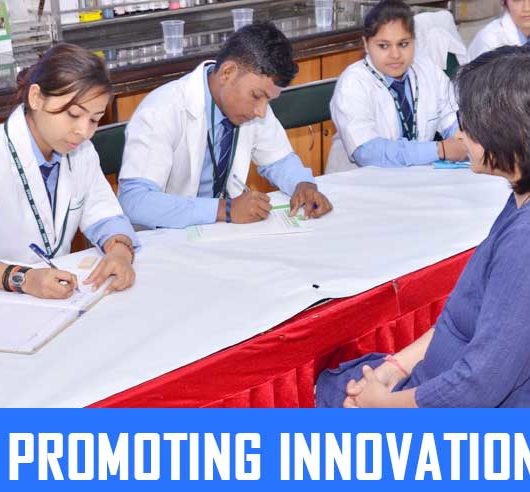NOSOCOMIAL INFECTIONS
Nosocomial infections, also known as healthcare-associated infections (HAI), are infections that develop after getting medical care but weren’t present at the time of admission. They may arise after discharge and in a variety of healthcare delivery settings, including hospitals, long-term care facilities and ambulatory settings. HAIs also include work-related infections that may affect employees. HCAIs are infections that initially manifest 48 hours or more after being admitted to the hospital or within 30 days of receiving medical attention. Adverse medication events, HCAIs and surgical complications are the most frequent categories of adverse events impacting hospitalised patients, according to research.
TYPES OF HAI
Many HAIs are caused by implants and in addition to infections caused by cross-contamination between patients and health staff, patients being prone to common infections due to weakened immune systems, and infections at surgery sites (SSIs). These include central line-associated bloodstream infections (CLABSIs), catheter-associated urinary tract infections (UTIs), and ventilator-associated pneumonia (VAP)
CLABSI- Central line-associated bloodstream infections are lethal nosocomial infections, with a fatality rate ranging from 12% to 25%. Catheters are inserted into central lines to deliver fluids and medications, but extended usage can result in significant bloodstream infections, compromising health and increasing care costs.
SSI- SSI is the most common postoperative surgical complication, with major morbidity, high mortality rates and expensive strain on national budgets and individual patients. SSIs are infections that develop up to 30-90 days after surgery in individuals who have received an organ, group of cells or gadget and impact both the incisional site and deeper tissues surrounding the operated area.
UTI- UTIs are the most frequent HAIs and one of the top ranking microbial illnesses, accounting for approximately 40% of HAIs and having major morbidity and death effects. Although most CAUTIs are harmless, some people harbour potentially harmful aggressive bacteria but are asymptomatic. Prolonging the duration of the catheter, female sex, older age, diabetes mellitus, the lack of systemic antibiotics, catheter placement outside the operating theatre and a breach in the closed system of catheter drainage are all risk factors for CAUTIs.
Despite a vast variety of other microbes, including eukaryotic fungus, being identified, E. coli is the predominant pathogenic microorganism that causes infection. Bacterial resistance results from the improper, repeated administration of antibiotics. Biofilm frequently forms on the surface of catheters as a result of CAUTIs. Microbes are protected by the biofilm from both antimicrobial agents and host defence mechanisms. Even though short-term catheter use has a low risk of CAUTIs if catheters are properly inserted and cleansed.
VAP- More over a quarter of patients in ICUs have pneumonia, the second most frequent HAI. Approximately 86% of HAIs are linked to VAP and mechanised automatic ventilation. After endotracheal intubation and mechanical ventilation, the average critical period for developing VAP was 2-3 days. Patients typically experience fever, altered bronchial sounds, decreased white blood cell counts, changes in sputum and the identification of the causative organisms. With a mean interval between intubation and the onset of VAP of 3 days, the first five days of mechanical breathing are the most dangerous for the development of VAP.
NOSOCOMIAL PATHOGENS
Bacteria, viruses, and fungal parasites are pathogens that cause nosocomial infections. These bacteria varies based on the patient group, medical facility, and even the environment in which the care is provided.
Bacteria- The most prevalent pathogens responsible for nosocomial infections are bacteria. Some are a part of the patient’s natural flora and only become infectious when the patient’s immune system becomes susceptible to illnesses. Example- Acinetobacter,Bacteroides fragilis, Clostridium difficile, Enterobacteriaceae(carbapenem-resistance), Methicillin-resistant S. aureus (MRSA)
Fungus- Through environmental contamination, Aspergillus spp. can cause illnesses. Candida albicans and Cryptococcus neoformans are also responsible for hospital infection.
Virus- Hepatitis virus can be spread during the administration of medicine to both patients and staff. Unsafe injecting techniques frequently result in the transmission of Hepatitis B and C.Despite the advancement of various high-tech procedures, hand washing with soap and water or an alcohol rub is still the most important way to maintain personal hygiene and prevent HAIs. However, due to the growth of antibiotic-resistant bacteria and the unwillingness of certain HCWs to apply best practice infection control, HAIs continue to be one of the leading causes of death in the majority of countries. As a result, it is critical that strategic, policy, and education activities continue to focus on treating and controlling such (mostly unnecessary) infections. A WHO-guided effective surveillance strategy can assist healthcare institutions in developing infection control programmes. Effective biosafety training for hospital workers, proper waste management, healthcare reforms, and making the general public aware of these endemic pathogens can all assist to reduce nosocomial infections.


